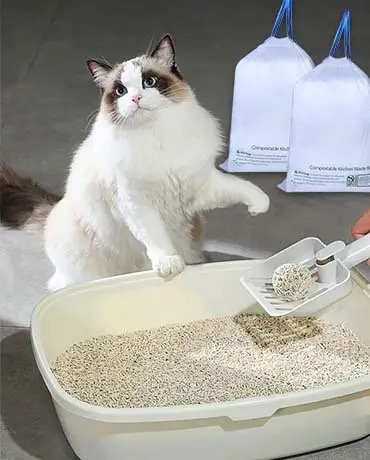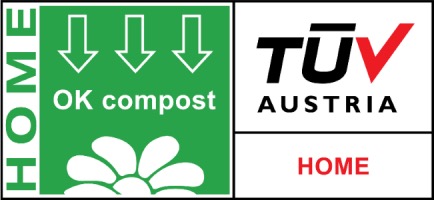Can You Really Compost Cat Poop?
Yes — but only if you do it right.
While composting cat poop may sound strange (and even risky), it can be done safely using proper methods. With growing concerns over plastic waste and pet care sustainability, many eco-conscious cat owners are now asking:
“Can I compost cat poop safely?”
“What kind of litter bags should I use to do it right?”
Let’s break it down.
Why Compost Cat Poop?
Every year, millions of tons of cat poop—along with plastic litter bags—end up in landfills. These contribute to methane emissions and environmental strain. By composting cat poop correctly and using certified home compostable cat litter bags, you can:
- ✅ Reduce your household waste footprint
- ✅ Avoid using plastic bags that take centuries to break down
- ✅ Turn waste into soil (for non-edible plants only)
The Problem with Regular Cat Litter Bags
Most litter bags on the market are made of non-biodegradable plastic. Even some bags labeled “eco-friendly” or “degradable” are actually oxo-degradable, which break down into microplastics—not compost.
That’s why the solution lies in certified home compostable cat litter bags.

What Are Certified Home Compostable Cat Litter Bags?
These are litter bags made from plant-based materials (like corn starch) and certified to break down fully in a home composting environment — typically within 180 days.
Look for These Certifications:
| Certification | What It Means | Logo to Look For |
|---|---|---|
| TÜV OK Compost HOME | Breaks down in backyard compost bin | ![TÜV Logo] |
| EN13432 / ASTM D6400 | Meets EU/US compostability standards | ![Standard Logo] |
✅ These certifications guarantee non-toxic decomposition, which is crucial for handling cat waste.
How to Compost Cat Poop Safely at Home
Important: You can’t just throw cat poop in your backyard compost bin and call it a day.
Here’s the safe method:
Step-by-Step:
- Use compostable litter + certified compostable litter bags
Avoid clay or silica litter. Choose wheat, corn, or wood-based litter. - Set up a separate compost bin
This bin is only for cat waste—never mix it with food waste or vegetable garden compost. - Maintain high temperature (ideally 140–160°F / 60–70°C)
This is needed to kill Toxoplasma gondii, a harmful parasite found in cat feces. - Let the compost rest for 1–2 years
Only use it on ornamental plants, trees, or lawns, not edible crops.
⚠️ Never use composted cat waste on vegetables or herbs.
Best Certified Home Compostable Cat Litter Bags (2025 Edition)
| Brand | Certification | Size Options | Notable Features |
|---|---|---|---|
| HEMC Bags | TÜV OK Compost HOME | S–L sizes | Tear-resistant, leakproof, bulk wholesale available |
| BioBag® | ASTM D6400 | Medium | Available in most U.S. stores |
| UNNI® | TÜV & BPI Certified | Multiple | Corn starch base, odor neutral |
🛒 Looking for wholesale compostable litter bags? Contact us at Hemcbags.com

FAQ
Q: Can I compost cat poop in a backyard compost bin?
A: Yes, but only if it’s a high-heat, closed system with compostable litter and bags.
Q: Are all compostable cat litter bags safe?
A: No. Only choose certified home compostable options like TÜV or ASTM-certified products.
Q: How long do compostable cat litter bags take to break down?
A: Typically 90–180 days in a home composting system.
Q: What happens if I use plastic litter bags in compost?
A: They won’t break down and will contaminate your compost. Always use certified compostable bags.
Final Thoughts
Switching to certified home compostable cat litter bags is more than just an eco-friendly move—it’s a safe and smart way to manage cat waste while cutting down on plastic use.
And yes, composting cat poop is possible, as long as you follow the right steps.
🌱 Be the change—ditch the plastic, switch to certified compostables, and help the planet one bag at a time.

